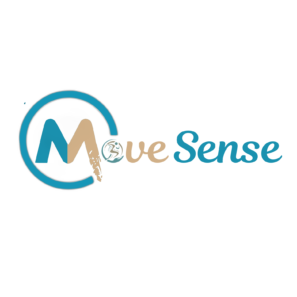Trigeminal Neuralgia
Trigeminal Neuralgia
Trigeminal neuralgia (TN), also known as tic douloureux, is a chronic pain condition that affects the trigeminal nerve, which is responsible for carrying sensation from your face to your brain. It is characterized by sudden, severe, electric shock-like or stabbing pain, typically on one side of the face. The pain episodes can be spontaneous or triggered by mild stimulation of the face, such as brushing teeth, eating, or even a light breeze.
Characteristics
- Pain Quality: Intense, sharp, shooting, or electric shock-like.
- Pain Intensity: Severe.
- Pain Location: Usually affects one side of the face, most commonly the lower face and jaw, but can also affect the area around the nose and above the eye.
- Duration: Pain attacks are brief, typically lasting from a few seconds to a couple of minutes, but can occur in rapid succession.
- Frequency: Pain can occur in clusters, with periods of frequent attacks followed by remission periods.
Causes
The exact cause of trigeminal neuralgia is not always clear, but it often involves:
- Nerve Compression: Blood vessels pressing on the trigeminal nerve near its connection with the brainstem.
- Multiple Sclerosis (MS): Damage to the myelin sheath around the trigeminal nerve.
- Nerve Injury: Trauma or surgical injury to the nerve.
- Tumors: Rarely, tumors pressing on the nerve can cause TN.
Diagnosis
Diagnosis typically involves:
- Medical History and Symptom Description: Detailed account of pain characteristics and triggers.
- Physical and Neurological Examination: To identify specific areas of pain and rule out other conditions.
- Imaging Studies: MRI or CT scans to check for nerve compression, tumors, or other structural issues.

What are the signs and symptoms of Trigeminal Neuralgia
Trigeminal Neuralgia is marked by severe pain that can last from a fraction of a second up to 2 minutes, and occasionally longer. The pain is often described as shock-like, stabbing, shooting, or sharp and intense, affecting one side of the face. In some cases, the pain appears as a persistent dull ache, referred to as “atypical trigeminal neuralgia.”
The frequency of attacks can vary from 1 to 50 times per day, with pain severity typically increasing over time. Sufferers may also experience tearing or redness in the eye on the same side as the facial pain.
Those with Trigeminal Neuralgia often report extreme hypersensitivity, where even slight stimuli can trigger painful attacks lasting from seconds to minutes. Such stimuli include:
- Touching the face
- Brushing teeth
- Chewing
- Speaking
The condition is more common in women (60%) than men (40%) and is more likely to occur in individuals over 50 years old.
- Need Assistance?
(07) 5619-5588
Varieties of Trigeminal Neuralgia
This subcategory of Trigeminal Neuralgia refers to patients who develop the condition due to neurovascular compression, without any other apparent cause. This compression, typically occurring at the nerve root in the brainstem, involves the nerve being pressed by a blood vessel, vein, or artery.
Classical Trigeminal Neuralgia can be further classified into “Purely Paroxysmal,” characterized by pain-free intervals between attacks, and “with Concomitant Continuous Pain,” which includes mild pain between episodes.
This subcategory of Trigeminal Neuralgia pertains to patients who develop the condition as a result of an underlying disease.
Known causes include Multiple Sclerosis, a tumor in the cerebellopontine angle, or arteriovenous malformation.
This subcategory of Trigeminal Neuralgia refers to patients who display symptoms of the condition but show no abnormalities on electrophysiological tests or MRIs. Like Classical Trigeminal Neuralgia, this diagnosis may suggest brainstem pathology.
Trigeminal Neuralgia is further categorized into “Purely Paroxysmal” and “with Concomitant Continuous Pain.” The former is characterized by pain-free intervals between attacks, while the latter involves mild pain between episodes. Around half of all Trigeminal Neuralgia sufferers experience continuous pain between severe attacks.
It’s common for Trigeminal Neuralgia patients to be undiagnosed or misdiagnosed for extended periods, as their symptoms can be similar to those of Migraine or Cluster Headaches.
How MoveSense will help you treat the Trigeminal Neuralgia?
You may have attempted various methods to treat trigeminal neuralgia symptoms, including over-the-counter painkillers, strong anticonvulsant or antispasmodic medications, Botox injections, and even surgical procedures like microvascular decompression (MVD).
While these treatments can sometimes provide pain relief and alleviate symptoms, many sufferers still experience painful attacks. In some cases, particularly after surgery involving the trigeminal nerve root, patients have faced complications such as hearing loss, cerebrospinal fluid leaks, and facial numbness.
If you suffer from Trigeminal Neuralgia and have found no significant relief from medication, we recommend a thorough examination of your neck and brainstem to investigate the underlying cause of your symptoms.
At MoveSense, we have treated numerous Trigeminal Neuralgia sufferers using world-class techniques to identify if the neck and brainstem are responsible. We conduct a comprehensive examination of the upper cervical spine to assess the severity of your sensitized brainstem.
Once treatment begins, we expect significant improvement in 90% of our Trigeminal Neuralgia patients within the first five consultations. The best part of our treatment is that it is medication-free, surgery-free, and non-invasive.

Varun Gautam
Headache and migraine specialist Physiotherapist
